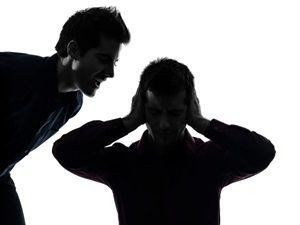 Although mental illness issues are becoming more openly talked about, there is still a heavy stigma that surrounds them. As news media portrays criminals as having some mental disorder, society associates mental illness with people who are harmful and dangerous. Learning more about mental illness is a sure way to begin to eliminate the stigma.
Although mental illness issues are becoming more openly talked about, there is still a heavy stigma that surrounds them. As news media portrays criminals as having some mental disorder, society associates mental illness with people who are harmful and dangerous. Learning more about mental illness is a sure way to begin to eliminate the stigma.
One mental illness which is often misunderstood is schizophrenia. Common beliefs of the illness describe it as having multiple personalities, but this is not the full truth. In fact, if you’ve ever wondered how many types of schizophrenia are there, well, there’s quite a few. This is what makes the illness so misunderstood. There are many different types of schizophrenia, each with their own combination of symptoms.
Advertisement
So put your own beliefs aside for a moment, as we explain what is schizophrenia and the different types of schizophrenia that exist.
What is schizophrenia?
 Schizophrenia is a rare and severe mental disease. The term itself means “split mind” referring to its ability to cause an imbalance within the brain. This is why it is often understood as a multiple personality disorder because there is a battle between the person’s own emotions and thinking that occurs.
Schizophrenia is a rare and severe mental disease. The term itself means “split mind” referring to its ability to cause an imbalance within the brain. This is why it is often understood as a multiple personality disorder because there is a battle between the person’s own emotions and thinking that occurs.
People with schizophrenia experience a combination of symptoms which include hallucinations, delusions, a loss in the ability to perform normal functions, and disordered thinking and behavior.
Sadly, schizophrenia is a chronic disease and treatment can span a lifetime. But schizophrenia and its symptoms can be managed so that the person can live a normal life.
Schizophrenia risk factors
 Currently there is no pinpointed cause of schizophrenia, but researchers consider it to be a combination of environment and genetics. Imbalances and problems within the brain’s chemicals may contribute to schizophrenia. Examinations of the brains of those who have schizophrenia have revealed changes to the brain and, although the cause is uncertain, scientists have determined schizophrenia to be a disease of the brain.
Currently there is no pinpointed cause of schizophrenia, but researchers consider it to be a combination of environment and genetics. Imbalances and problems within the brain’s chemicals may contribute to schizophrenia. Examinations of the brains of those who have schizophrenia have revealed changes to the brain and, although the cause is uncertain, scientists have determined schizophrenia to be a disease of the brain.
Family history, exposure to viruses, toxins and malnutrition in the womb, use of mind-altering drugs in teenage years, and an increase in immune activity are all other potential risks factors of schizophrenia, according to the Mayo Clinic.
Types of schizophrenia
How many types of schizophrenia are there? Well, there are about five major different types of schizophrenia, which include the following:
- Catatonic schizophrenia
- Disorganized schizophrenia
- Paranoid schizophrenia
- Residual schizophrenia
- Undifferentiated schizophrenia.
Although the symptoms of schizophrenia may appear in all different types of schizophrenia, each type is distinguished by a particular combination of symptoms. Let’s further examine these different types of schizophrenia to better understand them.
Catatonic schizophrenia
 Catatonic schizophrenia mainly affects a person’s body. Reduced motor skills, rigid muscles, reduced pain sensitivity, and a lack of ability to care for their own self are all aspects of catatonic schizophrenia.
Catatonic schizophrenia mainly affects a person’s body. Reduced motor skills, rigid muscles, reduced pain sensitivity, and a lack of ability to care for their own self are all aspects of catatonic schizophrenia.
Individuals with catatonic schizophrenia may have mutism, immobility, and be quite negative and refuse to complete tasks they are asked to perform. Furthermore, copy-cat behaviors can also appear, such as repeating words or actions that have already been said or performed by someone else.
Disorganized schizophrenia
 Disorganized schizophrenia refers to the disorganization of behavior and speech. These individuals may act childlike and withdraw from social contact. Those with disorganized schizophrenia oftentimes appear distracted with their own thoughts and express inappropriate emotions, like laughter during a moment of sadness.
Disorganized schizophrenia refers to the disorganization of behavior and speech. These individuals may act childlike and withdraw from social contact. Those with disorganized schizophrenia oftentimes appear distracted with their own thoughts and express inappropriate emotions, like laughter during a moment of sadness.
Their behavior can get in the way of performing everyday activities, and they can also be difficult to understand when they speak. When asked a question, they may go off topic and discuss matters completely unrelated as their thoughts are not organized.
Paranoid schizophrenia
 Delusions and hallucinations are most common in paranoid schizophrenia. These individuals can become quite angry, anxious and be argumentative. This is the form of schizophrenia most often discussed as hearing “voices” brought on by the hallucinations.
Delusions and hallucinations are most common in paranoid schizophrenia. These individuals can become quite angry, anxious and be argumentative. This is the form of schizophrenia most often discussed as hearing “voices” brought on by the hallucinations.
Paranoid schizophrenics often misinterpret scenarios which can lead them to become angry. They can be jealous and feel they are being persecuted most of the time.
Although this type of schizophrenia may seem the most violent, it is the one type that can achieve functionality through treatment.
Residual and undifferentiated schizophrenia
 Residual schizophrenia refers to an individual who has experienced an episode of schizophrenia in the past but it is not ongoing. The person may still show one or two symptoms over time, but it does not take over their life.
Residual schizophrenia refers to an individual who has experienced an episode of schizophrenia in the past but it is not ongoing. The person may still show one or two symptoms over time, but it does not take over their life.
Although those with residual schizophrenia may not show positive schizophrenic symptoms any longer – those being hallucinations and delusions – they still can have negative symptoms such as unexplained beliefs and disorganized speech. This form of schizophrenia can be a sign of remission where no further episode appears or stays with the person over time without ever becoming another episode.
Undifferentiated schizophrenia is described as a person who has many different symptoms for the other types of schizophrenia and therefore it is uncategorized.
Treatment of schizophrenia
 Now that we understand what is schizophrenia and different types of schizophrenia, we can now discuss treatments.
Now that we understand what is schizophrenia and different types of schizophrenia, we can now discuss treatments.
Common treatments for schizophrenia include pharmaceutical medications which can help control symptoms caused by the imbalance within the brain. The problem with this form of treatment is those with schizophrenia are often reluctant to take these medications. So depending on severity, this treatment may not be the best option.
Social therapy is also a means of treatment as a major symptom of schizophrenia is to withdraw from social contact. Individual therapy, family therapy, group therapy and vocal rehabilitation are all social means of treatment for schizophrenia. This form of treatment allows the individual to improve their social interaction as well as speech. It also assists in bringing the person back into social settings smoothly and comfortably where they can function once again.
Reducing stigma through understanding
Sadly, the way that Hollywood and the news portray the different types of schizophrenia paints quite the scary picture. Stigma continues to stick with schizophrenia because of these negative images and associations. We cannot overcome this stigma unless we educate ourselves and those around us to no longer fear this mental disease.
As public understanding of mental illness grows, further research can also come out about schizophrenia. This will help to reduce the stigma and potentially lead to better treatments as well.
Related Reading:
Mental health issues swamp health care system
Advertisement
The National Institute of Mental Health estimates that one in four Americans suffer from some type of mental health problem. Only one in 7 suffer from serious mental illness; however the need for medical care for the various mental health issues that face U.S citizens puts a big strain on the health care industry. Mental health officials are predicting that it will only get worse…
Want to protect your mental health?
People used to think memory decline wasn’t something you had to worry about until the age of 60. However, recent studies suggest that it could actually begin as early as 45-years-old. Harvard Medical School has been doing extensive research in the area of memory and mental health for many years, boasting many studies that recommend taking good old-fashioned approaches when it comes to mental health in seniors.

